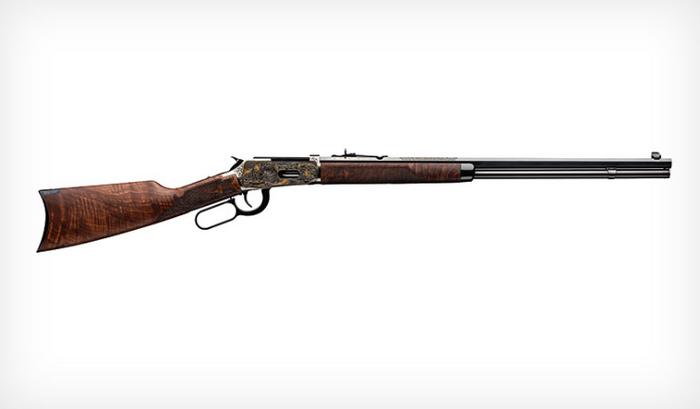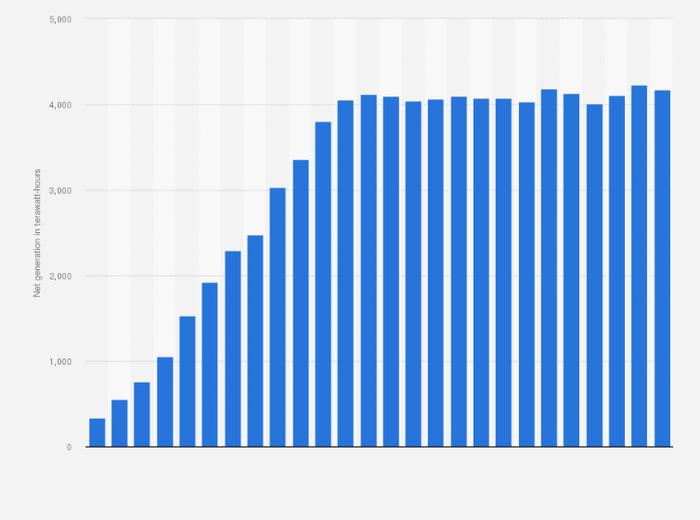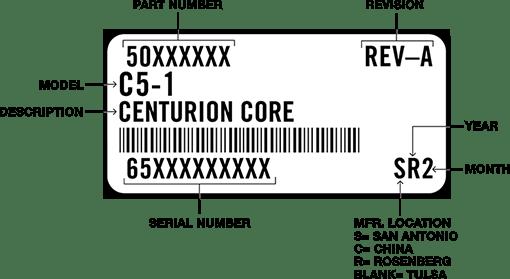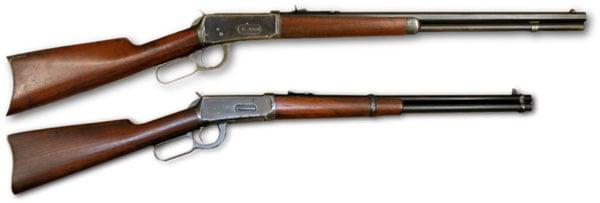Knowing the serial number of your Winchester Model 1894 is crucial for gun identification and valuation. This quintessential piece of Americana, evolving in tandem with technological advancements, has a lively history that every enthusiast should appreciate. From personal experience, I’ve found that understanding the nuances of serial numbers can unlock fascinating insights into this iconic rifle’s journey through time. In speaking with seasoned collectors and firearms experts, it becomes clear just how serial numbers dictate an owner’s ability to determine specifics such as the year of manufacture and even verify authenticity. By diving deep into countless models and consulting trusted resources, I’ve pieced together essential knowledge every Winchester collector should have at their disposal. Ready to navigate the intricate world of Model 94 serial numbers? Let’s set the stage for your exploration into one of history’s most celebrated rifles, unraveling the mysteries encoded within every serial number.
What are Winchester Model 94 Serial Numbers?

Every Winchester Model 94 has a unique serial number, but do you know what these numbers can reveal about its story? As a collector and enthusiast, I’ve come to appreciate that these serial numbers serve as a critical link between a rifle and its history. Each number is not just an identifier but a portal to the past, allowing us to trace our firearms’ journeys from the factory floor to the present. My experience has taught me that understanding these numbers is key to unlocking the historical significance of each gun.
The moment I decipher the serial number of a Model 94, I am often transported back to its era of creation, understanding who might have first held it and under what circumstances. It’s not just a number—it’s an intimate connection to a piece of history, a tangible form of time travel. Delving into the background of serial numbers bridges the gap between manufactured cold steel and a personal, lived experience. This connection gives any collector a deeper appreciation of the craftsmanship and stories these rifles carry.
From enabling me to identify production years to understanding manufacturing nuances, the journey within those numbers is endlessly fascinating. They tell tales of technological evolution and changing demands, offering a window into a past that is as dynamic as it is detailed. For anyone truly passionate about firearms, recognizing the story embedded in a serial number transforms a Winchester Model 94 from mere possession into a storied artifact.
Why are Serial Numbers Important?

What if the serial number on your Winchester Model 94 could tell you not just its age, but its value in today’s market? For many collectors like myself, a serial number is not just a string of digits—it’s a key to unlocking a Winchester’s story. Having spent my fair share of time as a competitive shooter and a dedicated collector, I’ve seen firsthand how the right serial number can drastically change the perceived worth of a Model 94.
These numbers serve as a gateway to history, tracing a Winchester back to its roots. Through them, I’ve identified rare pieces that were not only produced in limited runs but also associated with significant historical events. For any collector, pinpointing the exact year of production can mean the difference between an ordinary find and a prized possession. I’ve once uncovered a Model 94 from the early 20th century whose serial number hinted at an intriguing provenance, increasing its value exponentially.
Moreover, understanding these serial numbers aids us in making informed purchasing decisions. When I weigh the worth of a Model 94 for my collection, the serial number becomes a decisive factor—it’s where history meets present-day market dynamics. For serious collectors, these numbers are akin to a compass, guiding us toward making choices we’ll appreciate for years to come.
When Were They Manufactured?
Understanding Production Years

Could the year of manufacture really change the entire narrative of a Winchester Model 94? As someone who’s delved into the intriguing world of Winchester rifles, I can emphatically say yes. Understanding the production years of the Winchester Model 1894 is more than just a historical footnote; it is crucial in framing the rifle’s significance within the broader timeline of Winchester’s excellence. Each year marks technological advancements and design modifications that influence the rifle’s collectibility and desirability among enthusiasts. Recognizing these distinctions helps position the Model 94 not merely as a firearm, but as a cultural artifact embodying different eras of American innovation.
Placing these rifles into their precise historical context allows us to appreciate them beyond their functional use. For collectors, knowing a rifle’s production year enhances its story, potentially elevating its status depending on the year in which it was manufactured. This understanding is pivotal when examining key dates and milestones in the evolution of Winchester firearms, which can notably impact the historic and economic value of a Model 94. My experience has shown that identifying these details not only enriches our connection to the rifle but also underscores its rightful place in history, turning it into a cherished heirloom worthy of preservation. From here, we’ll delve into practical ways to utilize the serial number lookup to uncover these hidden stories further.
How to Use the Serial Number Lookup

When was the last time a simple number unlocked a wealth of history and value for you? As a Winchester Model 94 enthusiast, I’ve found that a serial number is not just a series of digits—it’s a key to unraveling the past. Using a serial number lookup is crucial for gun identification, determining exactly when and where your firearm was manufactured. This isn’t merely about numbers; it’s about appreciation and authenticity.
Delving into my years of experience as a collector and writer, I’ve learned the subtleties of using online databases to identify production years swiftly. These tools simplify what can otherwise be a daunting task, especially for newcomers. When embedded in our pursuit of identifying “When Were They Manufactured?” the serial number lookup emerges as indispensable. A thorough understanding nudges your collection journey into an enriching experience, allowing you to assess the historical significance tied to each piece. Embracing practical methods like these underscores your passion with precision, affirming your status in the collector community.
What to Look for in Serial Numbers?

Is your Winchester Model 94’s serial number hiding in plain sight? Find out where to look! Over my years of handling and appraising firearms, I’ve seen firsthand how the location and condition of a serial number can either enhance or detract from a rifle’s value. It’s one of those small details that can make a world of difference.
I always tell fellow collectors: make sure you know where your serial number is located. On the Model 94, the serial is typically found on the bottom of the receiver, just ahead of the lever. Discovering this number is the first step in unlocking the history and true value of your rifle.
Beyond just finding it, it’s imperative to assess its condition. Serial numbers can often be worn down, obscured, or even tampered with—which can significantly affect valuation and historical integrity. In cases where numbers are faint or distorted, close inspection with a magnifying tool can often provide the clarity needed.
From my experience, it’s crucial to familiarize yourself with the firearm’s unique markings and maintain them in pristine condition. This diligence protects not only the weapon’s lineage but also preserves its legacy for future enthusiasts. Attention to these details reflects a true collector’s mindset, always ensuring that the weapon’s history is as pronounced as its physical presence.
Who are Winchester Model 94 Collectors?

As someone deeply embedded in the firearms community, I often find myself surrounded by passionate collectors who dedicate much of their lives to the pursuit of Winchester Model 94 rifles. Have you ever wondered what draws thousands to collect the same model of rifle? The answer might surprise you. It’s not just about possessing a firearm; it’s about preserving a piece of history, a legacy that encapsulates the evolution of American craftsmanship. Model 94 collectors are an eclectic group, each driven by a unique blend of nostalgia, admiration, and an insatiable thirst for historical knowledge.
In my experience, the fascination begins with the storied past of the Winchester Model 94 itself. For many collectors, each rifle is a tangible connection to the past, a narrative that speaks of frontier life and the rugged, pioneering spirit. What unites us is more than just acquiring a valuable piece or the thrill of the hunt—it’s the camaraderie, the shared stories over campfires, and the friendly debates about nuances only true enthusiasts can appreciate.
Winchester Model 94 collectors often see themselves as custodians of history. They seek out specific serial numbers not just for their rarity but for the stories they hold. It’s a shared passion where every rifle holds a piece of our collective heritage, embodying a timeless legacy that transcends generations.
FAQs
What is the significance of the Model 94 serial numbers?
How can Winchester Model 94 serial numbers help determine the age of the rifle?
Where can I find the serial number on a Winchester Model 94?
Why should collectors pay attention to low serial numbers on Model 94 rifles?
Are there resources available for verifying Winchester Model 94 serial numbers?
Conclusion
Understanding the intricacies of serial numbers truly transformed my approach to collecting Winchester Model 94 rifles. Through the nuances of each serial number, I’ve gained a deeper appreciation of what makes these rifles unique. The value of Winchester 94 extends beyond its physical form; it’s about the history each piece carries. By meticulously studying serial numbers, I can accurately pinpoint production years and unravel the detailed timelines behind each firearm, enhancing both the gun identification process and the significance of my collection. Embracing this approach has not only refined my skills as a collector but also substantially increased the practical value of my collection. I remind fellow enthusiasts that possessing this knowledge isn’t just about acquiring items—it’s about nurturing an experience that resonates with history and craftsmanship. Recognizing these details, we enrich our journey and preserve the legendary legacy of Winchester Model 94 for future generations.